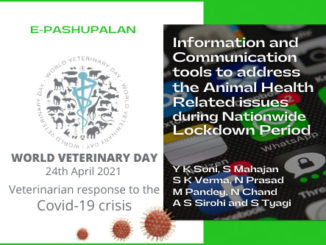Introduction
The COVID-19 pandemic exists in a global community. The current COVID-19 pandemic is caused by a coronavirus named SARS-CoV-2. Coronaviruses (CoVs) are a large family of viruses, several of which cause respiratory diseases in humans, from the common cold to more rare and serious diseases such as the Severe Acute Respiratory Syndrome (SARS) and the Middle East respiratory syndrome (MERS), both of which have high mortality rates and were detected for the first time in 2003 and 2012, respectively.
CoVs are divided into four genera: alpha-, beta-, gamma- and delta-CoV. All CoVs currently known to cause disease in humans belong to the alpha- or the beta-CoV. Many of these CoVs can infect several animal species as well. SARS-CoV infected civet cats and infected humans in 2002 and MERS-CoV is found in dromedary camels and infected humans in 2012. A virus that is regularly transmitted from an animal to a human is called a zoonotic virus. When a virus passes from animals to humans for the first time it is called a spillover event.
Currently, the zoonotic source of SARS-CoV-2 is unknown. The first human cases of COVID-19, the coronavirus disease caused by SARS-CoV-2, were first reported from Wuhan City, China, in December 2019.
Livestock sector plays a significant role in the rural economy of India. It contributes about 5 per cent of the total gross domestic product (GDP) and one-fourth of the agricultural GDP. The sector is unique in terms of employment opportunities as two-third of female workforce in rural India is engaged in livestock rearing. Livestock is an integral part of mixed farming systems that characterize Indian agriculture.
One Health Concept
As mentioned by CDC (Centers for Disease Control and Prevention), the foundation of the One Health approach comprises communication, coordination, and collaboration. This combined holistic method will surely reduce the occurrence and spread of such infections if done under the supervision of experts from different sectors like animal health (veterinarians), environmental health (ecologists, agricultural workers, and wildlife experts), and human health (doctors, epidemiologists, and public health experts). It would require an intense amalgamation of various bodies like WHO, various health organizations and national governments leading to the formulation and implementation of stringent policies including laws and penalization for successful application of One Health idea at a global level. In the interim, people have been following the non pharmaceutical interventions: washing hands regularly, social distancing by staying at home, self-quarantine if found sick, masking, and following the instructions applied by authorities to contain the spread of infection. Interestingly, India has used a unique pharmaceutical intervention by allowing the use of hydroxychloroquine (HCQ) as prophylaxis among health care workers, the results of which will certainly be interesting to look at in the coming days. However, even with all these measures, we will only be able to delay the rapid spread of virus to a certain level and the final numbers of deaths and affected people may remain the same. We all are familiar with the good old saying “Prevention is better than cure, it is important to recognize the stage at which prevention should be executed and fully beneficial. The current preventive measures are important but merely useful to slow the spread of virus which at present is already residing in human and animal populations.
On the other hand, by taking preemptive precautions at early stages of transmission before it reaches animal–human interface or by regular monitoring of the animal health and environment conditions, we can reduce the damage to a much larger extent. Therefore, the aim is to catch such infectious diseases before they even become epidemic and constitute remedial measures. On the optimistic note, as the pandemic has evolved and along with it the measures like social distancing, nationwide lockdowns with minimum human movement have shown positive impacts on the environment, whether it is clearer water bodies or better air quality index (AQI) due to reduction in pollutants and carbon emission. Therefore, we can regain a state of a healthy atmosphere to live by allowing the Earth to recover and by strictly monitoring human actions to avoid future pandemic. So that a transformative change comprising the atmosphere to live by allowing the Earth to recover and by strictly monitoring human actions to avoid future pandemic. As research said a transformative change comprising the reorganization of responsibilities in different economic, scientific, and social sectors along with proper funding for research and health and increase in science budget by governments is needed to construct better health facilities. For instance, supply of personal protective equipment for health professionals who are working in frontline, is falling short at this crucial stage. The possibility and effectiveness of the One Health concept have been verified and argued previously. Moreover, it has been proved as a superior approach for disease prevention over other conventional methods. Presently, the uncertainty and anxiety related to COVID-19 is increasing rapidly with the number of affected cases; hence, we also need psychologists to manage people’s mental health issues. Authorities of One Health commission and medical professionals should demand the enforcement of improved guidelines for environmental and industrial regulation.
Key points for One Health Approach
- Human health, animal health, and environment are dependent on each other.
- Over the years climate change, population explosion, biodiversity destruction, globalization etc., have led to outbreak of infectious diseases
- Current pandemic demands for collaborative One Health approach globally.
- Implementation of One Health strategies by all stakeholders will help to prevent further spread.
Covid-19: Impact on Animal Production System
The global animal husbandry industry has been largely impacted by the effect of coronavirus. There has been a sharp fall in the demand for chicken and meat since the outbreak as there have been various rumors amongst the peoples that the virus can spread through the animal’s meat and chicken. However, the Centers for Disease Control & Prevention declared that coronavirus is known to be transmitted via direct contacts to humans, and not via livestock or aqua animals. Several government organizations have set guidelines in order to prevent the pandemic.
Animal Husbandry Industry
This is segmented into different segments like dairy, meat, poultry, aquaculture, and others (insects). Chicken Meat and red meat, pork is expected to get affected significantly due to the COVID-19 pandemic. Based on the regional viewpoint, the most affected regions are the US, China, Italy, France, Germany, Spain, UK, and India. The regional demand for chicken and meat is decreased due to the increased rate of virus spread. Further, it has also been witnessed that the peoples are opting for the jackfruit as the replacement of chicken and mutton. Whereas, the shutdowns of the food chain services including restaurants has also affected the market growth.
Reduced access to animal feeds
Physical distancing and requirements for additional personal protective equipment are reducing the efficiency of industrial feed enterprises. Movement restrictions and illness are resulting in labour shortages and reduced supply of raw materials or other ingredients. Disruption of supply routes has further delayed feed supply.
Reduced access to inputs and services
Movement restrictions and disruption of national and International trade routes is curbing farmer access to breeding materials and replacement stocks (e.g. day-old chicks and semen). This can compromise sales for input providers. The disruption of public services (e.g. food safety inspection and animal health extension services), combined with interrupted delivery and use of vaccines and medicines is increasing the likelihood of new epidemics, including those involving animal diseases that cause major livestock losses (e.g. African swine fever in East and Southeast Asia) and outbreaks of diseases transmissible to humans. Import restrictions will have greater impact on areas which depends on imports to sustain production or rely on meat and dairy imports for consumption (e.g. large parts of Africa and Small Island developing states).
Reduced access to markets
Closure of live animal markets in many countries means small-scale producers cannot sell their goods. The disruption of the logistical channel and drop in demand are reducing sales and lowering prices. Disruptions of income from small ruminants or poultry are hitting women hardest, by reducing their purchases of household essentials and nutrition. Movement restrictions are also interrupting the role of intermediaries, who collect animals or products and aggregate them for further fattening, processing or retailing.
Reduced processing capacity
Staff reductions due to lockdown measures are constraining meat and dairy processing industries, given their labor-intensive nature. In France, staff shortages due to childcare, quarantine and sick leave have reached 30 percent in some slaughterhouses. There are similar instances in Egypt, Jordan and Tunisia.
Compromised storage and conservation
Transport disruptions and changes in retailing and consumption habits are forcing some collectors and processors to stock up.
Constrained informal businesses
Much of meat and dairy processing in developing countries is informal (i.e. up to 90 percent of volume). COVID-19 prevention and response disrupts these businesses. This disruption removes an outlet for small-scale producers, who often lack the capacity to sell to formal markets.
Constrained national transport
Movement restrictions are compromising transport, which is reducing the supply of livestock and livestock products. In China, milk processing and transport were disrupted by tight road traffic controls, leading to milk dumping.
Constrained international transport
Trade restrictions impact countries exporting livestock products as well as farmers whose incomes depend on exports. Within the European Union, 35 percent of beef is exported between member countries. A recent ban on exports caused farm gate prices to fall in Poland, as domestic consumption only represents 15 percent of production. Movement restrictions have also stopped livestock trade to China from the Lao People’s Democratic Republic, Myanmar, Thailand and Viet Nam. Livestock producers, traders and butchers lost their incomes since they could not export their animals and meat.
Sales and Consumption of food products
Modified retailing and product demand
Retailing is reorienting toward supermarkets and online platforms, which are now spiking. In China, leading e-commerce food delivery platforms increased their volumes by 400 percent in February 2020, while their pre-crisis share of fresh food consumption was only 3 percent. This means more packaged longer-life and processed meat and dairy products being shipped. While some farmers in Europe and North America seem to be able to create alternative and direct channels with consumers, in countries with a low penetration of e-commerce, processing industries or supermarkets, farmers cannot sell their produce.
Reduced consumer purchasing power
Quarantine and lockdowns are constraining purchasing power, particularly that of informal workers, and in countries with little or no social safety nets. The economic slowdown and increasing unemployment have already left people, including millions of migrant workers in India, with little or no income with which to buy food.
Reduced demand and public procurement
In most countries, closure of restaurants and reduced tourism is leading to a sharp fall in demand for food by these sectors. School feeding programs are also suspended, which is depriving millions of children of access to food. In China’s Hubei province, authorities reported an 80 percent decrease in transaction receipts for all sectors in February 2020 compared to 2019. However, at the end of March 2020 when measures were lifted, overall consumption rose back to 93 percent of its 2019 level. In India, chicken sales were reduced significantly after posts on social media created the impression that humans could contract COVID-19 by consuming chicken.
Measures to protect infestation of Covid-19 in food product market
Establish production safety nets, which may include new or resupplied feed reserves, special permits to transport drivers allowing animal feed distribution in remote areas and waivers for agri-food system operations to keep inputs flowing. Authorities may also empower producer organizations to improve bargaining via collective marketing and purchasing, coordinate the supply of livestock production inputs. Promote the local sourcing and production of animal feed and supplements. Establish emergency management procedures and services, including communication to mitigate rumors’, advise stakeholders and seek feedback. Reallocate staff and resources to crisis relief activities, including the provision of movement permits, disease control and food inspection.
Financial measures
Provide training or mentoring programmes to help small- and medium-sized enterprises access and manage the financial impact of the crisis, go digital and find new markets. Provide subsidies to agri-food sectors that maintain activities during lockdown; implement price controls to reduce inflation on livestock commodities.
COVID-19: Effects on Environmental Welfare
Even under normal circumstances, carcass disposal methods pose a pollution risk However, there are major environmental implications associated with disposing of carcasses at scale Furthermore, as pig and poultry industries are often concentrated in specific geographical areas, killing thousands of animals and birds may create a new stream of waste in ecosystems already burdened by environmental pollution. Generally, as carcasses degrade, bodily fluids, chemical and biological leachate components and hazardous gases [e.g., ammonia (NH3), hydrogen sulfide (H2S), methane (CH4), and other air pollutants] are released into the environment, including into the air, surface water, and groundwater.
Conclusion
COVID-19 raised a myriad of One Welfare concerns associated with livestock production. In so doing it has highlighted the fractures in our current food system like no other challenge before. Our fragile food system requires urgent and radical change to build resilience and ensure food security in the face of future challenges, including climate change. Fortunately, COVID-19 also presents us with a unique opportunity for a One Welfare driven transformation of the food production system. This will ensure a resilient, safer, fairer, and potentially healthier environment for both humans and animals in the future.
References
- https://www.businesswire.com/news/home/20200422005680/en/Impact-COVID-19-Global-Animal-Husbandry-Market-2020
- Meenakshi Sushma (2020), COVID-19 calls for renewed look at livestock farming, downroearth, 09 April 2020
- FAO (2020). Mitigating the impacts of COVID-19 on the livestock sector, FAO, Rome, Italy, page no.6.







Be the first to comment